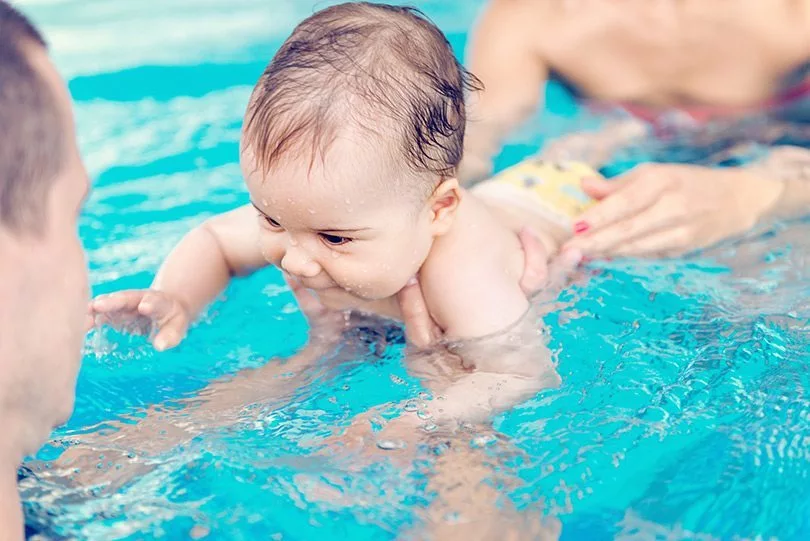Advantages & Prospects of Swim Diapers
Swim diapers, as the name suggests, are nappies specially designed for babies to wear when swimming. The outer layer is made of special waterproof material, and the inner layer is just like the common diaper, which can achieve the effect of water resistance and excrement absorption and isolate bacteria and microorganisms to some extent. The biggest difference between swim diapers and common diapers is that the former do not contain superabsorbent polymers, so as to avoid swelling. Also, for this reason, the waterproof and urine-absorbing requirements of swimming nappies bring a great difficulty to the materials and technologies of the inner core and water-resistant layer. And it is a large expenditure for the capital investment of the brand's production line, either.
Swim diapers have been widely accepted and used abroad, but they are still a niche category of diapers in China. However, in recent years, as the new generation of parents in China pay more attention to early childhood education through swimming, baby swim diapers have become a potential market. At present, the technological development of swim diapers for infants in China is still in the exploratory stage. Whether a defect in the choice of fabric or a lack of cutting technology may lead to the leakage of baby excrement. Domestic brands still have a long way to go if they want to be recognized by consumers in terms of quality and increase brand recognition.

Since the application of swim diapers is limited to places such as infant swimming pools, infant water education centers, etc., the increase in the share of swimming diapers is inseparable from the development of the early education industry. In recent years, the early childhood education market has developed vigorously and parents have paid more attention to early education, with its content involving music, art, calligraphy, dance and other aspects. Swimming can promote blood circulation, increase vital capacity and reduce jaundice, cultivating children's independence and the ability to resist frustration. Therefore, early education with swimming has been gradually in parents' sights.
In contrast to the huge potential of early childhood education in water, it is the immaturity of the operation and development of domestic infant swimming pools, with the lack of standardized standards and poor hygiene being common in news reports. According to a research report about the market positioning of China's baby swimming pool industry in 2019-2025, the two major trends in the domestic industry have been basically clarified. One is in the first- and second-tier cities represented by medium and large cities. Baby education is included in the category of early childhood, and in conjunction with early education services, the industry standards of infant swimming and sports will be further improved. The other is in the third-tier cities and towns. Infant swimming will become an important service item in the sales place of maternal and infant products, and then a complete industrial chain integration will be realized.
For now, the business model of baby swimming pools and the early water education industry is still improving, and relevant standards and policies also need to be further developed. In April 2021, the Beijing Mother-Infant-Child Industry Association joined a number of enterprises and institutions to participate in the drafting and release of the General Specification for Swimming Service of Infants and Young Children to promote the development of infant swimming in a safe and healthy direction.
Nowadays, swim diapers still have a lot of room to grow in terms of penetration rate and technology research and development. While the early education industry is understood and accepted by more and more parents, it is believed that swim diapers will also have broader prospects.